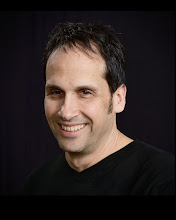Sorry it took me so long to get around to this, but I've been catching up on a few things. Chances are by now you've seen that
Lexmark paid $148 million to acquire Brainware. My first reaction was "Wow. That seems like a lot of money." But, then I started doing some research and apparently, Harvey Spencer Associates has Brainware ranked ahead of Top Image Systems in worldwide market share, and, as we recently reported,
TIS recently reported annual revenue of close to $30 million.
So, Lexmark apparently paid less than five times revenue- which is still a pretty good premium. Lexmark hinted that more financial details about Brainware may be available during its first quarter earnings call in April.
For those of you who don't know
Brainware, it is an intelligent data capture (IDC) ISV. From what I understand, most of the heavy lifting on the development side is done in Europe, with the sales and marketing headquartered in Ashburn, VA. Brainware has enjoyed meteoric success in the invoice capture market in the past 5-6 years.
Formed out of the ashes of the flameout of German ECM ISV SER, Brainware's management team spun the company out of a call center software business and aggressively grew sales by focusing on ROI related to invoice capture. Unlike some of its competitors, Brainware has historically de-emphasized the workflow piece of the invoice processing equation and really focused on what it terms as "straight-through processing." This involves automatically extracting enough information off of invoices so that they can be matched with P.O. and shipping data and automatically posted to an accounting/ERP system without anyone having to approve them.
Brainware has also done some high-volume forms and remittance processing implementations, but to date invoices has been its real sweet spot. It sounds like Brainware will be working closely with the Perceptive development staff on additional data capture applications in markets like higher education and healthcare where Perceptive has a strong presence.
Perceptive is the document management ISV that
Lexmark bought in 2010. Lexmark paid more than 3 times revenue for Perceptive, which is in a market where companies have historically had a lower valuation than the IDC market where Brainware plays. So, Lexmark has a history of paying a good premium for software vendors. And, if you remember, HP paid like more than 10 times revenue for Autonomy last year. That fact is hardware vendors typically have to pay a decent price to get a decent software vendor.
Part of this is because I think the general consensus is that hardware companies don't know how to run software businesses. And this was certainly a widespread concern when Lexmark bought Perceptive. But, you know what, I think because Lexmark has done such a good job allowing Perceptive to remain autonomous, there were really no similar questions that came up this time around. In the meantime, last year Lexmark
acquired a BPM software provider, Pallas Athena, to compliment Percpetive and recently
reported 30% organic growth for the Perceptive business.
There's a ton more I can write on this, which will show up in my
next premium issue. But, for now, it appears full speed ahead for Brainware as part of Perceptive, taking advantage of the Lexmark resources. And Lexmark now has pretty much a full capture, workflow, document management suite, putting it on the cutting edge in the world of MFP vendors.



